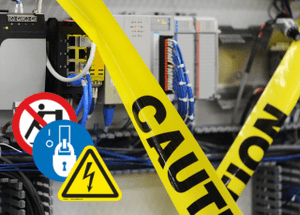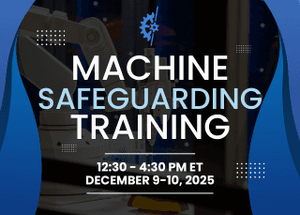A Deeper Dive Into the State of Manufacturing

Manufacturing has served as the backbone of the American economy for centuries. In more recent years, other areas of the economy have grown in importance, though manufacturing still plays a critical role. In fact, even a one percent decline in manufacturing output can have devastating consequences for related industries and the people who work within them. So, is the manufacturing industry in decline or has it continued to boom? And how will the current political climate – and COVID-19 – shape its future?
The State of Affairs Prior to COVID-19
In 2019, most American industries saw a steady boom that brought new and higher-paying jobs to the market. However, the manufacturing industry did not experience the same growth other industries did. The Washington Post reports that, in stark contrast to the rest of the economy, the manufacturing industry was actually in recession. Production shrank by 1.3 percent and industry experts believed this was the worst it had seen since 2015.
Top names in the manufacturing industry blamed the trade war with China for the manufacturing slump. In fact, several companies shut their doors or canceled entire product lines because of the trade war. Some also had to find more expensive materials or labor for their products, which led to an increase in prices.
The Washington Post identified additional factors that posed challenges for the American manufacturing industry, including:
- The strength of the U.S. dollar relative to the purchasing power of other currencies
- Reduced investments in gas and oil exploration
- Reduction in car sales
- Boeing’s halt of production after its 737 Max aircraft scandal
- Reduced foreign investment
The Effects of the Pandemic on U.S. Manufacturing
The first major effect of the pandemic on manufacturing is that it forced the industry to apply the brakes. Plants and factories all around the world shut down in response to calls from scientists and mandates from governments. They did so to slow the spread of COVID-19 by reducing physical contact. Economists believe this may have a severe impact on the GDP in America.
However, the pandemic also led to increases in the demand for certain products. The industry’s inability to meet this need in the first few months led to mass shortages in cleaning supplies, toilet paper, masks and other pandemic essentials. With more people looking for new ways to enjoy socially distanced entertainment, the outdoors industry also experienced shortages.
Overall, the pandemic led to mixed results for the manufacturing industry. Some sectors have yet to recover, but most others have begun to thrive beyond pre-epidemic levels. In fact, Industrial Equipment News reports that October 2020 was the strongest manufacturing month the industry had seen since 2018.
The Current U.S. Manufacturing Situation
The National Association of Manufacturers also praised the performance and contributions of the manufacturing industry. These are some highlights of its report:
- Small businesses make up the majority of the manufacturing industry in America.
- The average total compensation for manufacturing workers is just under $88,500.
- In the second quarter of 2020, manufacturers still managed to contribute $2.05 trillion to the U.S. economy.
- Every $1.00 invested in manufacturing yields an ROI of $2.74 that goes back into the economy.
- The manufacturing industry employs 12.2 million workers.
- If U.S. manufacturing were a separate economy, it would be the eighth largest in the world.
Increased demand for products has given the manufacturing industry an excellent opportunity to pivot. Despite this, some manufacturers still feel concerned about cash flow, debt and an uncertain economic future as the COVID-19 pandemic appears to be worsening.
The Road Ahead for Manufacturers
The road ahead is littered with unknowns. At the time of writing this article, Joe Biden had reportedly won the U.S. presidential elections, but President Trump continues to challenge this in courts across America. Regardless of who occupies the Oval Office in 2021, manufacturers’ concerns remain largely the same.
With such a large portion of the industry made up of small businesses, many feel unfavorably about the allocation of disaster relief funds to larger companies. Manufacturers want to see more and better support for small businesses and their employees. Professionals within the manufacturing industry have their eyes on other sectors, too, and have expressed an interest in seeing further expansion of the health care system. Additionally, the Association of Equipment Manufacturers reports an increased desire for a president who prioritizes investment in infrastructure.
In spite of this, professionals, overall, remained optimistic about the future of manufacturing for the next 12 months and beyond. In a survey done by the National Association of Manufacturers in September, 62% of surveyed small business manufacturers had an optimistic outlook on the industry’s future, with 66% of overall surveyed manufacturers feeling positive about their company’s outlook.
Other good news is that the economy is expected to continue to grow, but not at the rate previously predicted. MarketWatch reports that economists have projected a 3.6% growth rate for 2021, compared to an initial forecast of 4.8% annual growth.
Also encouraging is the way manufacturers have evolved due to the pandemic, building agility into their business models through more tightly controlled supply chains and increased efficiency through automation. That new outlook may continue to have positive effects through this crisis – as well as any future ones.
Prioritizing Manufacturing Safety and Compliance
The longevity of the product and equipment manufacturing economy depends on not just its finances but also its commitment to safety. Maintaining a strong safety record makes it easier for the industry to attract workers and keep liabilities low – and that starts with safe products and equipment. From machine risk assessment services to ANSI/ISO compliant labels to custom warnings, at Clarion Safety, we’re committed to helping you create safer equipment and workplace environments. Get in touch and let us know how we can help put safety first.



